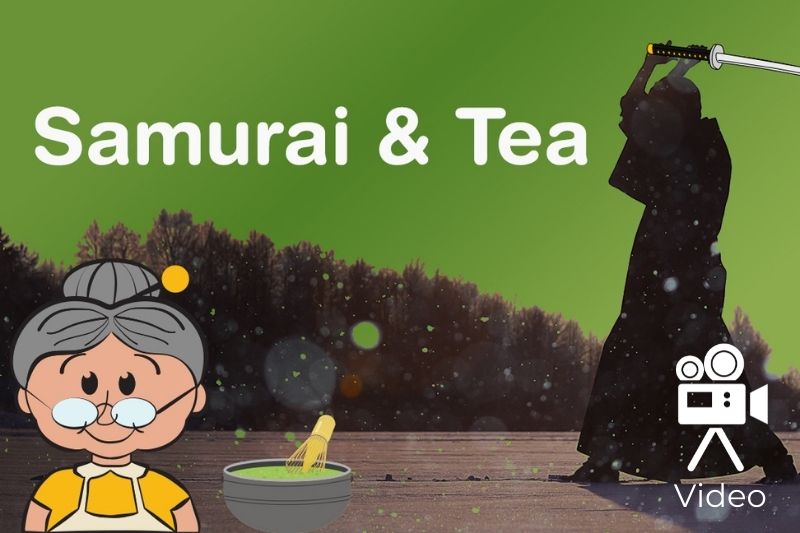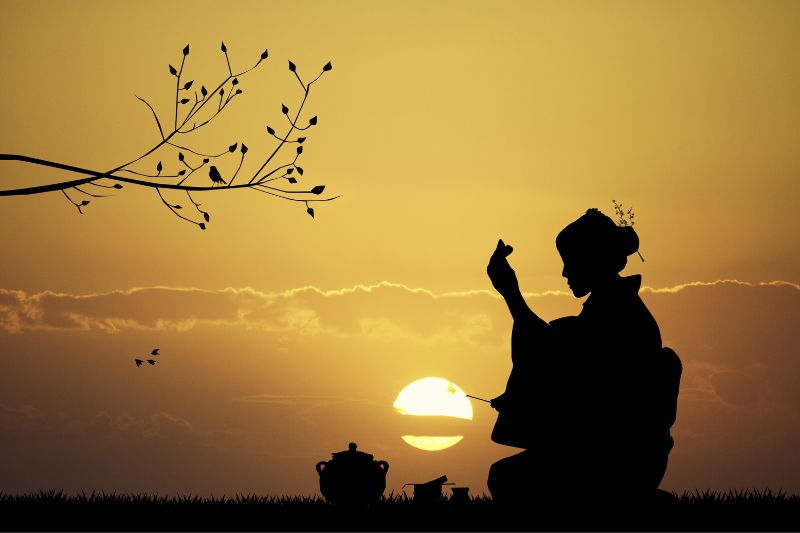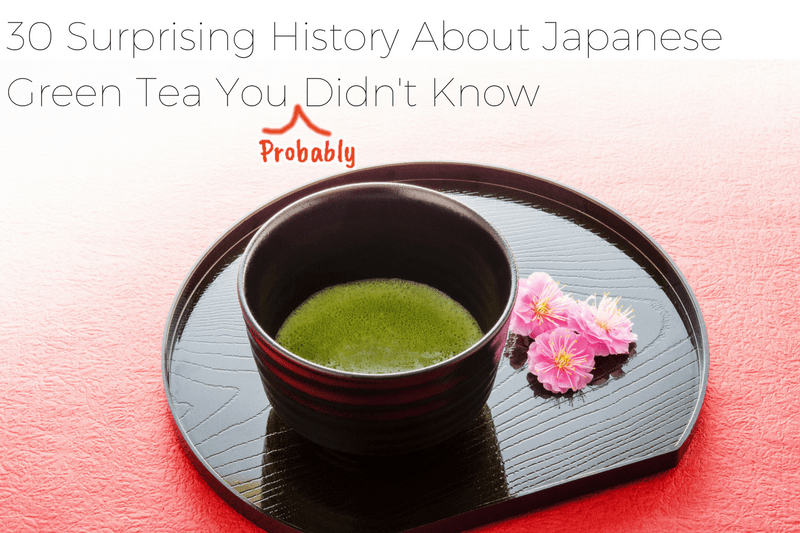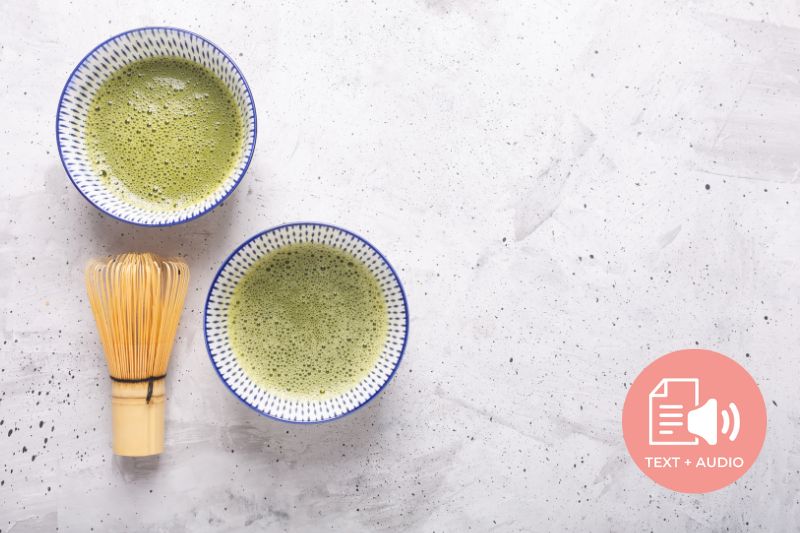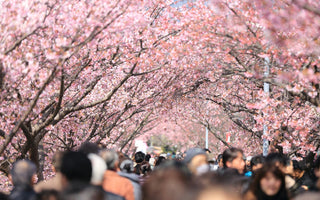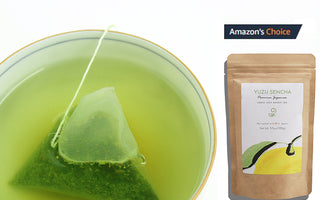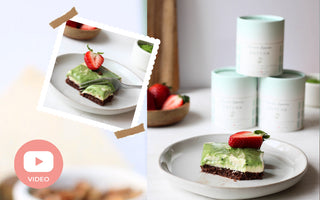Subscribe to Green Tea Podcast:
What is Japanese Tea Ceremony? – Explained in 6 simple steps
Chanoyu(茶の湯), Sado(茶道) or simply the Japanese tea ceremony, is a ritual that is religiously followed in Japan. Japanese matcha green tea is served in a series of choreographed steps, with the host simply gliding through the whole ceremony. In order to balance the slight bitterness of the tea, traditionally prepared Japanese sweets are also served along with it.
This whole process is more than just about making tea. It is an aesthetic compilation of certain predefined movements coordinated in such a way that each action comes straight from the soul. Every movement and every gesture made by the host are done in consideration of the guest's comfort. From the placement of required utensils, the point of view of the main guest, or Shokyaku (正客), is always considered.
The tea ceremony is so deep, and there are so many different "ryuha," or divisions, that have different approaches.
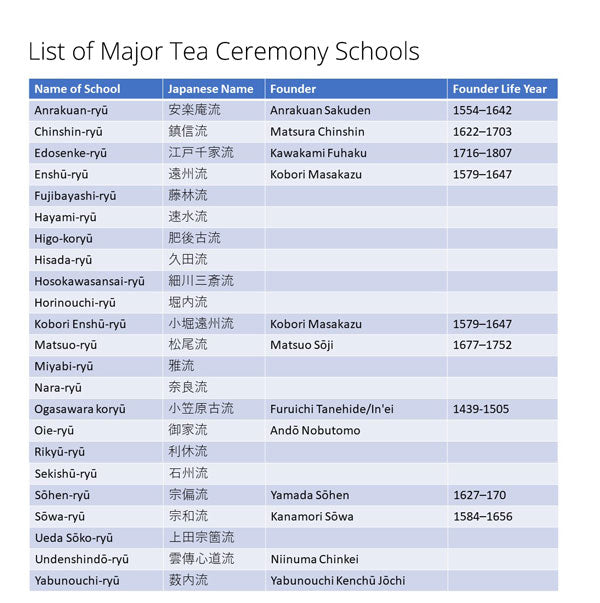
But I tried to summarize the simple ceremony in easy, simple steps so that you could understand what they are.
Steps involved in the Japanese tea ceremony
A very strict protocol needs to be followed when executing the steps of the Japanese tea ceremony, or "Way of Tea." While these steps, along with the myriad of utensils used, might seem a bit difficult to understand at first, breaking them into the following 6 steps would enable the reader to gain a certain degree of familiarity with the same.
While there are some variations in the steps involved in the different types of Japanese tea ceremonies celebrated, the basic steps remain the same.
-
Preparation of the host for the ceremony:
This starts weeks in advance of the actual day of the ceremony, with the host sending out formal invitations to the invitees or guests. Then comes the part wherein the host prepares her soul so that it can leave the worldly thoughts behind and start to put all its focus on imbibing within herself a sense of equilibrium and harmony.
-
The start of the worldly preparations usually commences with the selection of the right utensils based on:
- The season when it is being held and
- The time of day when the ceremony is slated to be held
Then comes the stage when the tea room or the tea garden, whichever is to be used depending on the season, is cleaned, the utensils are washed and kept ready for use to prepare the premium green tea, and the tatami is changed.
Lastly, if the tea ceremony is inclusive of a meal, the host starts to prepare for the same in the early hours of the morning.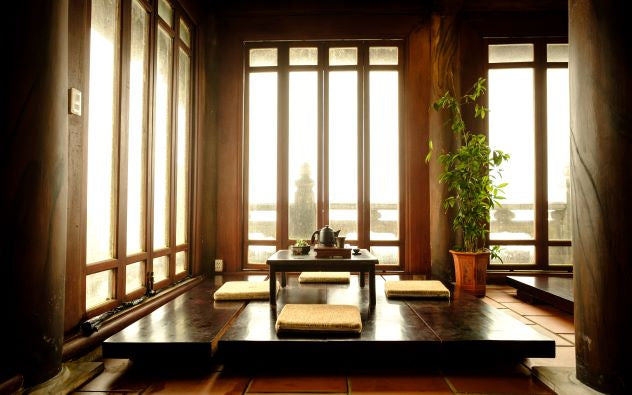
-
Preparation of the guests for the ceremony:
The guests too have to undergo a process of spiritual preparation for the same by leaving their worldly worries aside and purifying their hearts and their thoughts.
On the day of the ceremony, they have to wait outside for a signal from their host, which indicates that the host is ready to receive them in the tea room or tea garden.
They have to wash their hands before entering, and this symbolizes their washing away the dust gathered from the world outside. While entering after receiving a signal from the host, the guests have to bend and pass through a low door.
This is taken to be a way of showing the respect one has for the host. It is also a sign of acknowledgement and thanks for the preparations that the host has made for the ceremony. -
Cleaning of the tools:
This starts the actual preparation of the Japanese matcha green tea. All utensils to be used are brought out and cleaned in front of the guests using graceful and aesthetically beautiful movements and gestures. Such is the concentration on this task that no extra movements or unnecessary words are allowed even during the ceremony.
The beauty of the ceremony lies in the harmonious flow of one action to another, starting with the utensil cleaning and ending with the impeccable behavior of the guests. The most important utensils and tools used for the ceremony involve:- The Mizusashi (水差し)or the container for cold water,
- Furo (風炉), a small clay stove,
- Chawa (茶碗) or the tea bowl,
- The Chasen (茶筅) or the tea whisk,
- The Chashaku (茶杓)or the scoop used to take out the Matcha powder,
- The Natsume (棗)or the container which will hold the tea and
- The Kama (釜) which includes the kettle and its lid.

-
Preparing the Matcha:
After the tools are cleaned, they need to be elegantly displayed, and then the preparation for the matcha begins. The host takes out a tea bowl and fills it with matcha powder, taking three scoops of the powder for every guest present. Water is then added to the tea bowl, and a thin paste is made by whisking the composition. After this paste is properly made, more water is gradually added.
-
Serving the Matcha:
The prepared tea bowl is then presented to the Shokyaku, or main guest, and the exchange of bowls takes place. The Shokyaku starts with admiring the bowl, rotating it, and then taking a sip from it.
The guest subsequently wipes off the tea bowl rim and offers it respectfully to the guest seated beside him. This guest too repeats the same actions and passes the tea bowl onto the next. This action gets repeated until all the guests have taken turns sipping the prepared premium green tea, and the tea bowl finally comes back to the host.
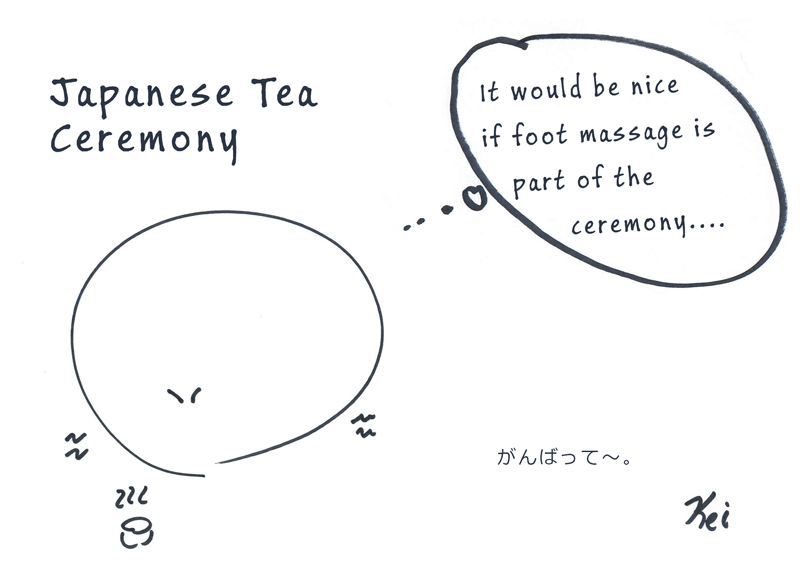
-
Completion of the ceremony:
The host sets about cleaning the bowl after it comes back to him or her, and then the tea cup and the tea scoop are also cleaned. These cleaned utensils and tools need to be inspected by the guests who have come to attend the ceremony.
This is done to show the admiration and respect they have for the host. The tea bowls and other utensils and tools are inspected and examined with care and respect. The utensils are handled with great caution with the help of a cloth, and then the host gathers up all the tools. It is during this time that the guests' exit after bowing, thereby marking the end of the ceremony.
A tray containing traditional sweets is also presented to the guests along with the tea. In the event that there is a meal involved, the same is also served to the guests.
The Japanese tea ceremony is a beautiful attempt by the Japanese to hold on to their cultural heritage and even pass it down the generations.
Right from the preparations to the ending with the guests leaving, the whole journey can be taken to be an attempt by the host to build a connection with the guests and also with nature on a spiritual level.
Get Free Bonus Books




